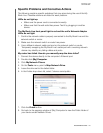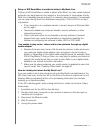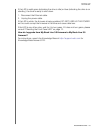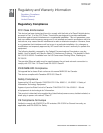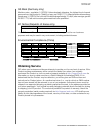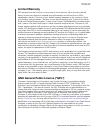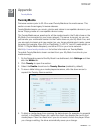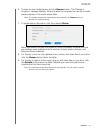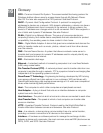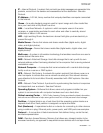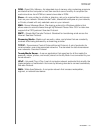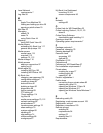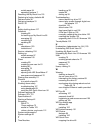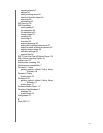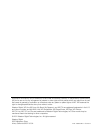
MY BOOK LIVE
USER MANUAL
GLOSSARY – 135
IP—Internet Protocol. A system that controls how data messages are separated into
packets, routed from the sender and reassembled at the destination. See also
Protocol.
IP Address—A 32-bit, binary number that uniquely identifies a computer connected
to the Internet.
iTunes—An audio playback program used to import songs and other media files
from your hard drive or My Book Live drive.
LAN— Local Area Network. A system in which computer users in the same
company or organization are linked to each other and often to centrally-stored
collections of data in LAN servers.
LED—Light-emitting Diode. An electronic device that lights up when electricity is
passed through it.
Media Server—Device that stores and shares media files (digital audio, digital
video, and digital photos).
Media Storage—Device that stores media files (digital audio, digital video, and
digital photos).
Multi-user—A system in information technology that enables more than one user to
access data at the same time.
NAS—Network Attached Storage. Hard disk storage that is set up with its own
network address rather than being attached to the computer that is serving network
workstation users.
Network Computer—A computer that communicates with a central data storage
facility such as a server or RAID system.
NFS—Network File System. A network file system protocol that allows a user on a
client computer to access files over a network as easily as if the network devices
were attached to its local disks. Normally associated with UNIX systems. See also
Protocol.
NTP—Network Time Protocol. A protocol for synchronizing the clocks of computers
and equipment over a network. See also Protocol.
Operating System—Software that allows users and programs installed on your
system to communicate with computer hardware such as a hard drive.
Online Learning Center —
WD’s Online Learning Center provides the latest information,
instructions and software to help users get the most out of their personal cloud storage.
Partition—A logical division on a hard drive that the operating system treats as a
separate hard drive. Each partition is assigned a unique drive letter.
Port (Hardware)—A specialized outlet on a device for connecting to other devices
using a cable or a plug. Ethernet ports, power ports, and USB ports are examples.
Protocol— A convention of data transmission that defines timing, control format,
and data representation.
RAM—Random Access Memory. Memory that allows any storage location to be
accessed randomly, as opposed to sequential access devices such as tape drives.



